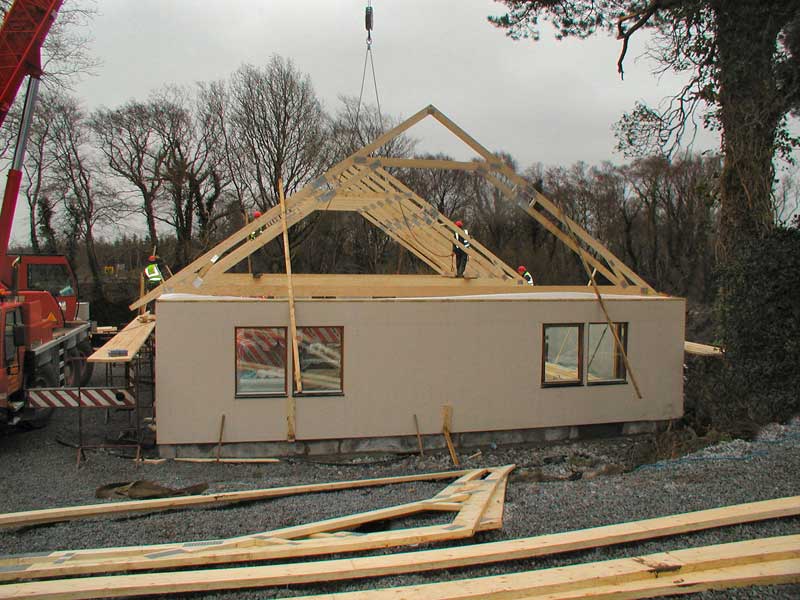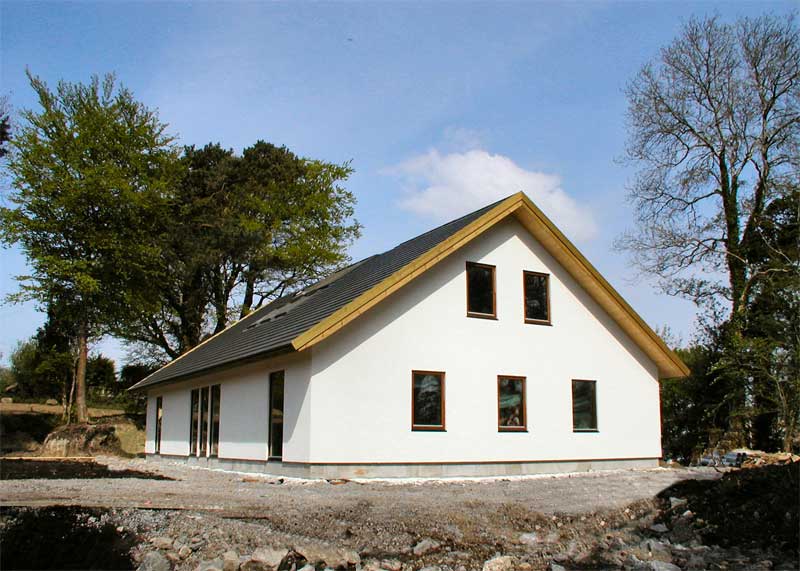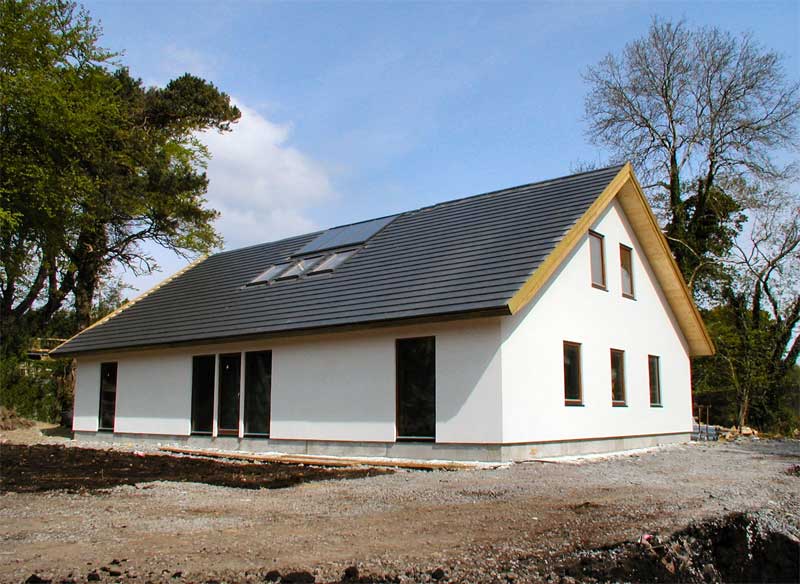Tuesday 15th of March 2005 – FOR RELEASE
On Tuesday the 15th of March a PASSIVE-HOUSE, a house that does not need to be heated, was built a few miles outside of Galway. It is the brain child of Lars Pettersson of Galway based Scandinavian Homes Ltd. It is believed to be the worlds first standardized and factory made passive house.
This house will be part of Sustainable Irelands low energy conference “See the Light 2005 – Solar Profits for New Buildings” being held in Galway this summer. It will also be made available for the public to visit to experience the almost unbelievable concept of a house without heat.
The house is a 2500 sq.ft family home nestled in between mature trees on the main Clifton road, near the village if Moycullen. As with all houses built by the Galway based company, the building procedure is predictable and very very fast.
The foundation works started on Wednesday the 9th of March, the pre-manufactured house arrived 6 days later on Tuesday the 15th, the shell was erected with the roof fully felted in two days, just in time for St Patrick’s day!
Complete AIR-TIGHTNESS is one of the keys to succeed with a passive house. Careful sealing of the age-proof vapor -barrier is done using special butul-rubber seal strips. The seal must be complete and the big challenge is to achieve complete air-tightness between the ground-floor and the first floor.
The house requires practically no heating at all. There is only one 900w electric heater built in to the Temovex 750 heat-recovery ventilation unit. In addition to this there are water pipes laid in the foundation under the tiled floors in the bath and utility rooms.
This floor-heat comes from the solar collectors on the south-facing roof. A total of 6.3m2 of solar-collectors by Solaris of Macroom, Co. Cork take care of most of the hot-water requirements.
The sun will provide all the hot-water needed for the year except during the four winter months when an electric heater built into the 300 liter water tank will supplement the sun.
Lars Pettersson, managing director of Scandinavian Homes Ltd. explains that if the hot-water usage is substantial, a micro heatpump could be docked to the solar system to further reduce the electrical usage for the critical winter months. Lars is confident however that wind power might soon be able to help heat the hot water by dumping electricity into the hotwater tank from a turbine on the roof. We will see.


















